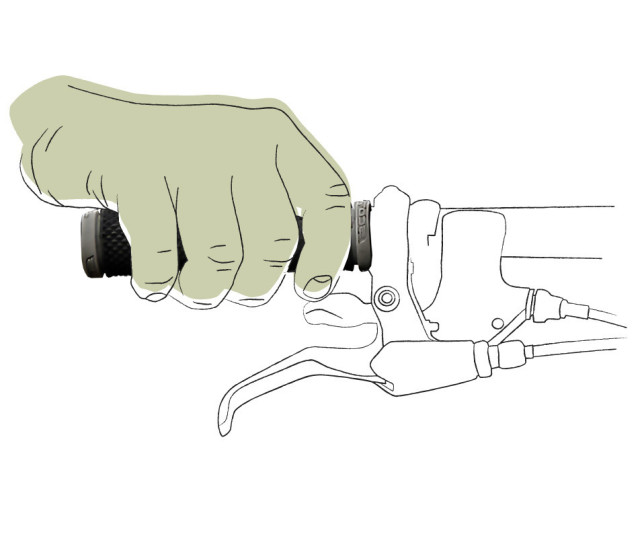How To…Handle a Steep Descent

AFTER YOUR QUADS have cranked out a grueling uphill slog, bombing down the back side of a mountain may seem like welcome relief. But roots, rocks, and loose soil can have you clinging to your handlebars tighter than Scrooge to his money. Shane Gould, president of Portland United Mountain Pedalers, or PUMP, breaks down the best way to handle tough descents so you can relax your grip.
Step 1 Rest. If the steep decline comes after an uphill crankfest, stop. Heading downhill when you’re winded, achy, and whipped is a dangerous proposition, since your muscles, which are oxygen-deprived and awash in lactic acid, will be less responsive. Take some time to hydrate, stretch your muscles, and rest your heart (and mind).
Step 2 Be a backseat driver. The natural tendency is to stand up on your pedals and lock your knees. Avoid doing this. Instead, shift your weight back as you ease into the descent. With a strong grip on the handlebars, slide your bum nearly off the back of the saddle, bend your knees, and keep a firm grip on the seat with your thighs. Gould suggests you stay within a cheek’s reach of the saddle. And, unless you have clip-in shoes, keep your feet out of any straps in case you need to bail.
Step 3 Lay off the (front) brake. Keep your speed in check by using a low gear and by depressing your back brake until it’s nearly locked up. Except in emergencies, avoid hammering the front brake. Its vicious stopping power could send you right over the handlebars.
Step 4 Don’t try to avoid everything. Constantly turning and braking for every stick in your path wears on your hand and arm muscles—and your concentration. Trust your bike to handle the small stuff, and absorb the shock with your arms and elbows by lifting your rump off the seat. As for avoiding the big stuff, just keep your eyes trained on the trail ten to twenty yards ahead of you, and envision the line you’ll take around large obstacles.
